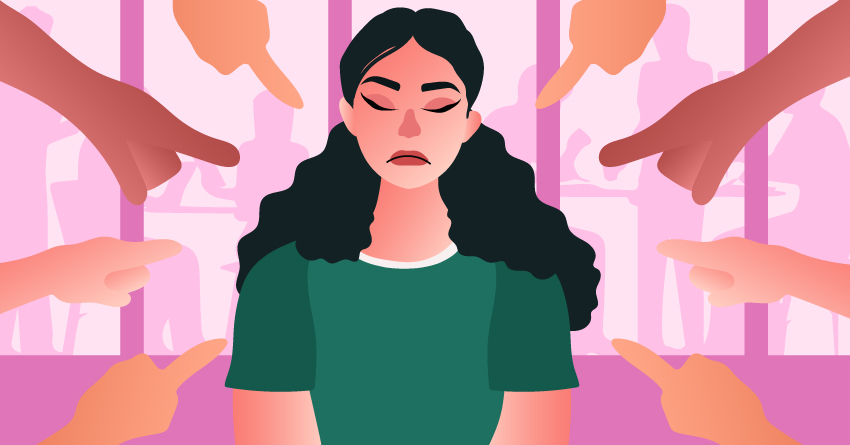
Sex positivity has become a buzzword across social media, marketing campaigns, and other related spaces. You’ve likely seen it paired with everything from self-care routines to sex toy promotions. But beyond the hype and hashtags, you might be wondering: What does sex positivity actually mean? Where did it come from? And who helped shape it into the movement it is today?
Our guide here is to unpack those questions. We’ll share its roots, what it truly stands for, and how it goes beyond being a trendy label.
What is Sex Positivity?

Sex positivity is a movement that embraces sexuality as a natural and healthy part of life. This involves approaching topics like pleasure, consent, sexual health, body image, and diverse relationship styles with curiosity, respect, and without shame or judgment.
It began to take shape around the 1920s, with vibrant, queer-affirming communities like the ballroom scene in Harlem and feminist circles in New York’s Greenwich Village embracing open attitudes toward sexuality. The movement was also heavily influenced by Austrian psychoanalyst Wilhelm Reich, who championed the idea that sex is a natural and vital part of human well-being. Reich helped popularize the concept, even coining the term “the sexual revolution” to envision a freer, more loving world—one liberated from shame, repression, and punitive views around sex.
After that, the movement continued to grow—despite a few lulls along the way—and today, sex positivity is more openly embraced than ever before. It even saw a major resurgence during the pandemic, as sex toys became a staple for those staying at home.
Celebrity-backed brands like Goop, Maude, and Crave entered the spotlight, while collaborations from popular names with Womanizer and Bellesa helped boost the appeal of pleasure products even further. Platforms like TikTok and Instagram also became hubs for sexologists and educators, offering bite-sized, engaging insights that helped normalize conversations about sex and pleasure.
Why It Matters

Most of us grew up surrounded by sex-negative messages, whether from family, school, media, or our communities.
And let’s be honest, traditional sex education didn’t help much either. It often focused heavily on scientific jargon without addressing real-life experiences or emotions, leaving a lot of people with confusing or harmful beliefs about sex, such as:
- Sex is wrong unless it’s for making babies.
- Women who express their sexuality are “sluts.”
- Only gay people get sexually transmitted infections (STIs).
- Women can only orgasm through vaginal penetration.
- People will immediately die from HIV.
- Female orgasm always involves squirting.
- Women must bleed the first time they have sex, or it “wasn’t real.”
- Masturbation is shameful or harmful.
- Men must always be “ready” for sex, or something’s wrong with them.
- Talking about sex is inappropriate or dirty.
- Kinks or non-traditional fantasies mean you’re “broken.”
- Using sex toys means your partner isn’t enough.
- Using lubricant during sex means you don’t find your partner attractive anymore.
- Sex workers are deviant and sinful people.
- Trans people deceive people for sex.
Not only does it make people feel ashamed about their desires, but it can also cause real harm in the long run. When sex is treated as taboo or “wrong,” it can lead people to suppress their needs or feel guilt for simply wanting something completely natural.
Worse, this stigma can keep someone from seeking important care, like avoiding STI tests or ignoring abnormalities in their genitals, because they’re afraid of being judged.
This is why sex positivity is such a significant movement because it challenges harmful stereotypes, encourages safer sex practices, fosters body awareness, and ultimately helps people liberate themselves from unwarranted shame.
Traits of a Sex-Positive Mindset
A common misconception about sex-positive people is that they are only those who are sexually active or engage in kinks. As long as you embody the traits listed below, you are becoming sex-positive:
1They embrace and respect their sexuality.

One of the core traits of a sex-positive person is respecting their own sexuality. They take the time to learn about their bodies, explore different activities, and embrace their sensuality. Most importantly, they recognize that their body deserves pleasure. They openly communicate their desires with their partners, ensuring mutual respect and pleasure are at the forefront of any connection.
2They talk openly about sex when it feels appropriate.

Those who are part of the sex positivity movement spread awareness in various ways.
Some create online platforms to share their insights and educate others, while others prefer a more personal, word-of-mouth approach. In casual settings, like social gatherings with friends, they might share helpful facts about sex or gently encourage others to open up about their own experiences.
Not only that, but they also actively participate in events and activities that promote sex positivity, aiming to raise awareness and foster a more open and accepting conversation about sexuality.
3They stand up for their sexual health and sexual desires.

Sex-positive people advocate for safer sex practices, not just for their own well-being but for others as well. They prioritize using protection like condoms, checking in with their partners during intimate moments, using lubricants when necessary, and ensuring informed consent is always given before engaging in any sexual activity.
As we’ve mentioned in the first trait, they firmly believe they have the right to enjoy sex. They don’t tolerate selfish partners who refuse to put in the effort or pretend to be ignorant about the importance of mutual respect and care.
4They listen to others without judgment.

A sex-positive person is someone who listens without judgment when someone opens up about their sexual health issues or curiosities. Instead of making jokes or dismissing their concerns, they offer reassurance and support, helping the person navigate their challenges.
They are also the type of person who, when encountering stories online about someone embracing their sexuality, coming out, or sharing their sexual health struggles, refrains from mocking or using dismissive reactions. Instead, they offer encouraging comments and, if necessary, provide clarification or share helpful information.
5They feel at ease in their bodies.

Another key trait of sex-positive people is their comfort with nudity, especially when it comes to their own bodies. While insecurities may pop up from time to time, sex-positive individuals have a sense of self-acceptance that cannot be achieved with those who have sex-negative beliefs.
For too long, bodies, particularly women’s, have been shamed and mocked, making people feel self-conscious during sex. Sex positivity encourages body positivity, reminding us that bodies, including genitals, come in all shapes and sizes. Sex-positive individuals embrace this diversity and feel no fear in showing their bodies during intimate plays.
6They explore fantasies and new sexual activities.

Those who embrace sex positivity are also naturally curious about exploring different sexual activities. They’re open to trying new positions, pleasure techniques, sex toys, and other experiences that can enhance their enjoyment.
However, it’s important to note that being sex-positive doesn’t mean you have to engage in activities like anal sex or BDSM. Never feel pressured to try something you’re not comfortable with. Respect for your own boundaries is key to a positive sexual mindset.
7They unlearn shame-based beliefs about sex.

A person with a sex-positive mindset is always eager to learn and educate themselves about sex. They actively seek out reliable sources of information, such as books, blogs, and social media profiles of professionals like sexologists, gynecologists, and other experts in the field. They also prioritize evidence-based information over hearsay or societal taboos.
By doing this, they deepen their understanding of not just the mechanics of sex, but also the emotional, psychological, and cultural factors that shape our perceptions of it.
8They support sexual rights and inclusive sex education.

Another important aspect of the sex-positive community is supporting sexual rights and better sexual health policies for everyone. They advocate for policies promoting sexual health, such as more comprehensive sex education in schools, access to menstrual products, affordable or subsidized birth control, and easier access to STI testing.
They actively share informative posts online, sign petitions, and participate in events that support these causes, all while pushing for societal changes that ensure everyone has access to the resources and knowledge needed to make informed decisions about their sexual health.
Signs of a Sex-Negative Mindset
Part of embracing sex positivity is acknowledging and addressing negative behaviors, whether they’re ones you’ve unknowingly practiced or noticed in others. Growth starts with awareness, so here are a few common sex-negative beliefs and habits you might want to reflect on and begin shifting:
1Viewing sex and masturbation as shameful or taboo

Because sex is often framed as something shameful or “dirty,” this stigma extends to natural and consensual behaviors like premarital sex and masturbation. Because of this, many people grow up internalizing the belief that simply wanting or enjoying sex is wrong. This can lead to intense feelings of guilt, anxiety, or even emotional distress during or after sexual activity, sometimes to the point of crying or feeling deeply ashamed.
2Mocking consensual non-traditional kinks or relationships
 Another common sex-negative belief is mocking or shaming people who engage in unconventional relationships or intimate setups.
Another common sex-negative belief is mocking or shaming people who engage in unconventional relationships or intimate setups.
This often shows up online, especially in comment sections of videos where individuals talk openly about topics like polyamory, kink, or other nontraditional dynamics. Instead of approaching these conversations with curiosity or respect, sex-negative perspectives tend to dismiss or ridicule them, reinforcing the idea that there’s only one “acceptable” way to experience love and intimacy.
3Making jokes about STIs or sexual assault

One of the most harmful things sex-negative thinking encourages is turning serious issues like STIs or sexual assault into jokes. You’ll often see this in the media. For instance, when a teenage boy is assaulted by an older woman, instead of calling it what it is (assault), it’s played off as him “getting lucky.” These narratives are dangerous and invalidate real trauma.
If you ever hear someone joking about these topics, don’t stay silent. Speak up kindly but clearly. Let them know those comments aren’t just in poor taste but harmful. STIs and sexual assault are real experiences that impact people deeply, and making fun of them only adds to the stigma surrounding these issues.
4Assigning specific sexual acts to certain orientations

Here’s another harmful message that often stems from a sex-negative mindset: the belief that “real sex” only happens between a biological man and woman through vaginal penetration. This outdated idea completely disregards the experiences and intimacy of queer couples. It also reduces all other types of sex—like oral, anal, or non-penetrative acts—to just foreplay or “extras.”
This kind of thinking not only invalidates diverse sexual experiences but also reinforces narrow definitions of intimacy and pleasure. Sex comes in many forms, and what matters most is consent, connection, and mutual enjoyment.
5Blaming victims in cases of sexual assault

Some individuals blame the victim, particularly if the victim is a woman known for being sexually active or wearing trendier clothing. They use this as an excuse, claiming that the perpetrator was “triggered” by what the victim was wearing. If you ever hear someone speaking this way, please speak up and advocate for the victims.
6Criticizing or shaming bodies

People who mock someone’s sexuality often target their body as well, especially when the person has a body that doesn’t fit the typical model standards.
7Policing women’s expression of sexuality

A common sex-negative belief is that women shouldn’t express their sexuality, and if they do, they are labeled as “sluts,” “pick me’s,” or even brainwashed by the media. This leads to women who wear non-traditional clothing or show a bit of skin being heavily ridiculed.
8Ridiculing sex toy use as unnecessary or threatening

Another trait of individuals with sex-negative beliefs is the tendency to mock sex toys and other sexual wellness products. They often see these tools as replacements for real partners or believe that using lubricants means someone isn’t attracted to their partner anymore.
These misconceptions stem from misunderstandings about pleasure and masturbation, where people fail to recognize that these products can enhance intimacy, foster personal exploration, and promote overall sexual health.
How to Embrace Sex Positivity
As you’ve learned about the traits of a sex-positive person and the behaviors to avoid, you might be wondering how to shift toward embracing sex positivity yourself. The journey is unique to each individual, and while the steps are up to you, one thing is clear: it takes time, especially if you grew up in an environment where sex was viewed in a negative light. Here are some general steps you can take:
1Learn

The first step in embracing sex positivity is unlearning the myths you may have grown up with. Many of us were exposed to misinformation about sex from our upbringing, culture, or media, and these can stick with us more than we realize.
The good news is that plenty of resources are available to help you overcome those outdated beliefs.
You can start by following trusted medical professionals and sex educators on social media who break down complex topics like sexual health, pleasure, consent, and relationship dynamics in ways that are engaging and backed by science.
If you’re more into reading, here are a few highly recommended books often mentioned by educators and bloggers online:
- Come As You Are: The Surprising New Science That Will Transform Your Sex Life – Emily Nagoski
- Healing Sex: A Mind-Body Approach to Healing Sexual Trauma – Staci Haines
- The Ethical Slut: A Guide to Infinite Sexual Possibilities – Dossie Easton
- The Body Is Not an Apology: The Power of Radical Self-Love – Sonya Renee Taylor
- She Comes First: The Thinking Man’s Guide to Pleasuring a Woman – Ian Kerner
- Pleasure Activism: The Politics of Feeling Good – Adrienne Maree Brown
- Sex at Dawn: The Prehistoric Origins of Modern Sexuality – Christopher Ryan
2Connect

As you dive deeper into learning about sex and pleasure, it’s also a great time to reconnect with yourself. Start by exploring your own body and discovering what brings you joy through different masturbation techniques. Notice how your body reacts, what feels good, and what doesn’t. You might even want to try out a sex toy or two to introduce new sensations.
If you’re in a relationship, this exploration doesn’t have to be a solo flight. In fact, it can be a beautiful opportunity to connect with your partner more intimately. Share your newfound discoveries—whether it’s a certain sex technique you enjoy, a pleasure zone you didn’t notice before, or an sex-tivity that excites you.
Opening up this kind of conversation not only builds trust and vulnerability but can also unlock experiences that make your sex life more enjoyable. Who knows? You might realize you’ve both been curious about the same things all along.
3Practice

As we’ve touched on earlier, embracing sex positivity isn’t something that happens overnight. It’s a gradual process, one that may come with moments of doubt or old myths creeping back into your thoughts. And that’s okay. What matters is that you keep learning and exploring.
To support this process, consider practices that help you tune into yourself more deeply. Journaling can be a powerful way to reflect on your beliefs and track your growth. Meditation can help calm the mind and bring clarity, while mirror work or affirmations can shift your inner dialogue to one that’s more accepting, loving, and open. The more you create space for these practices, the easier it becomes to replace negativity with empowerment.
4Educate

Once you’ve reached a space where you’ve unlearned old beliefs and feel more open and grounded in your understanding, it’s a great time to start sharing your insights with others. Supporting sex-positive communities and helping to spread science-backed, compassionate information can make a real difference.
You don’t need to be an influencer or expert to do this. Simply being that go-to friend who listens without judgment, shares helpful resources, or clears common misconceptions can go a long way. Whether through casual conversations, reposting something insightful, or advocating for inclusive sex education, your voice matters.
Takeaway
Sex positivity isn’t just a passing trend. It’s a powerful, meaningful movement that encourages people to break free from the shame and pressure of sexual repression. It takes time, reflection, and conscious effort, but it’s worth it!
When you embrace this mindset, you open the door to better, more fulfilling sexual experiences, improved well-being, and a more empowered, confident approach to life.


